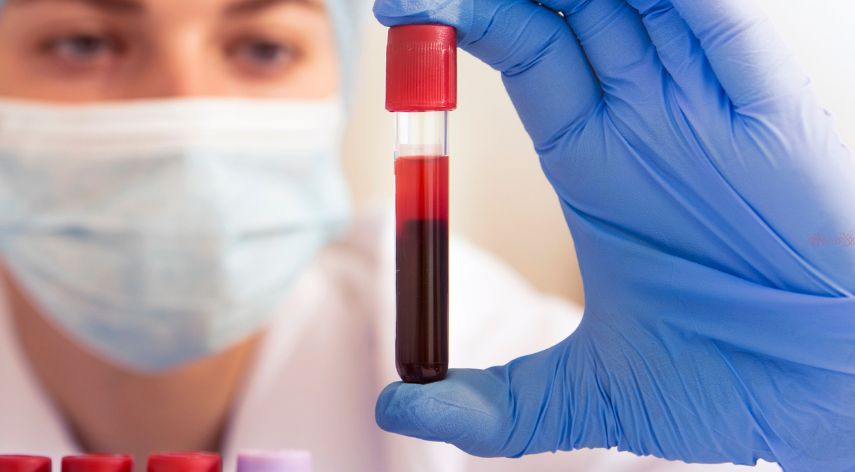A Safer and Non-Invasive Biofeedback Therapy to Improve Quality of Life

Biofeedback therapy can improve quality of life, know-how, and what it does.
Biofeedback therapy is a non-drug treatment, giving patients the ability to control bodily processes such as muscle tension, blood pressure, and heart rate.
When you raise your hands to say hi, or move your legs to walk, you control the action. But, some of the body functions like heart rate, skin temperature, and even blood pressure are not in your control; those get controlled by your nervous system. Biofeedback is a technique that makes you learn to control some of your body functions, like heart rate.
In biofeedback, your body gets connected to electrical sensors that give details about your body. These details can lead you to make changes in the body. You can relax specific muscles to achieve results and reduce your pain. With Biofeedback therapy, you can easily control your body, improve your health condition and physical performance.
Table of Contents
ToggleBiofeedback Therapy Sessions
During the sessions, your therapist will attach electrodes to your skin or hands. The sensors will send information to the monitoring device. Here, your therapist will examine your body measurements on the monitor.
In some cases, finger sensors also get used, and it sends signals to the screen. The signs can get displayed as sound, flash, image, or light representing your heart, breathing rate, and more.
It will also help them identify and suggest mental activities and relaxation techniques that can help regulate the client’s bodily processes.
With proper practice, clients learn to control the process without having to be monitored. The session goes for an hour or less, and clients can feel relief within 8-10 sessions.
Biofeedback Therapy has proven to:
- Reduce depression, anxiety, stress, PTSD, and any types of cravings for drugs or alcohol
- Lowering the experience of chronic pain and other common mental health issues related to depression, addiction, or eating disorders.
- It helps those dealing with ADHD to have a better ability to focus
- Aid to those not being treated with medication
- People suffering from sleeping disorders or insomniacs can gain quality sleep.
The Benefits of Biofeedback Therapy:
As you are under stress, this function fluctuates, and you start to sweat, heart rate accelerates too. A therapist can help you practice some relaxation exercises that will fine-tune and control your body functions.
It might be used as a relaxation technique to turn your stress level down and activate your body. It is a total experience of healing the mind, body, along with emotional well-being and learning critical skills to cope with stress and engage your mind to heal more.
Coping techniques like breathing deep, meditation, and other ways can help you witness how brain waves change. It is a safe technique that involves no medication or invasive treatment.
People considering the therapy didn’t complain about any side effects of it! So, you will understand what can make you calm and how you can utilize it to work on your overall mental health coping.
Types of biofeedback therapy:
- Thermal biofeedback measures skin temperature. With that, it can also be helpful to treat any sort of headache, be it mild or complex.
- Electromyography measures muscle tension. It gauges overall muscle activity and tension. So, you can get relief from an anxiety disorder, back pain, and even headache.
- Neurofeedback or EEG biofeedback focuses on electrical brain activity. It has also been shown to be a promising treatment option for ADHD, epilepsy, and seizure disorders. Visit advantagehcs.com to know more about Biofeedback therapy and how to get one for you.
What does biofeedback therapy help in?
- Attention Deficit Hyperactivity Disorder
- Alcohol Use Disorder
- Substance Abuse
- Drug Addiction
- Anxiety
- Fecal incontinence
- Fibromyalgia
- Headache
- High blood pressure
- Irritable bowel syndrome
- Raynaud’s disease
- Chronic Pain
- Stroke
- Temporomandibular joint disorder (TMJ)
- Urinary incontinence
- Migraines
- Hypertension
- Insomnia
- Traumatic Brain Injury
Why does Biofeedback therapy appeal to people?
People who are close to you and have considered the therapy will always speak good about it. You will be surprised to know the positive and healthy reaction from patients choosing the treatment. The long list and benefits of it are many, and here are few more reasons why it is an attractive therapeutic option:
- It is a non-invasive, non-drug treatment
- It reduces or eliminates the need for long term medication
- It enhances and boosts the benefits of medication
- It also helps women who can take medication during pregnancy to rely on it
- It allows people to be more focused on their health and control it
Want to consider Biofeedback therapy? Contact Advantage Healthcare Systems! We offer a proven and promising way to deliver treatment for numerous conditions. We are quality therapists here to give you the best possible results. You can improve your overall health and wellbeing and focus on the quality of life.
Read a lot more informative blog posts here.
Recommended For You
Spread the loveWhen it comes to understanding temperature, Celsius and Fahrenheit are the two most commonly used scales around the world. The Celsius scale is primarily used in most countries, while the Fahrenheit scale is popular in the United States. If you’ve ever come across a temperature given in Celsius and wondered how it translates to Fahrenheit, you’re in the right place. This article will guide you through the process of converting 19 degrees Celsius to Fahrenheit, using simple formulas and steps. The Celsius Scale The Celsius scale, also known as the centigrade scale, is a metric system temperature scale based on the freezing and boiling points of water. On this scale, water freezes at 0 degrees Celsius and boils at 100 degrees Celsius under standard atmospheric conditions. This scale is widely used in scientific contexts and by most of the world for everyday temperature measurements. The Fahrenheit Scale The Fahrenheit scale, on the other hand, was developed by Daniel Gabriel Fahrenheit in the early 18th century. In this scale, the freezing point of water is 32 degrees Fahrenheit, and the boiling point is 212 degrees Fahrenheit. This scale is still commonly used in the United States for weather forecasts and some cooking measurements. The Formula for Conversion Converting temperatures between Celsius and Fahrenheit involves a specific formula. The formula to convert from Celsius to Fahrenheit is: [ \text{F} = \left( \text{C} \times \frac{9}{5} \right) + 32 ] Where: ( \text{F} ) represents the temperature in Fahrenheit ( \text{C} ) represents the temperature in Celsius By using this formula, you can easily convert any temperature from Celsius to Fahrenheit. Step-by-Step Conversion of 19 Degrees Celsius to Fahrenheit Let’s walk through the process of converting 19 degrees Celsius to Fahrenheit using the formula mentioned above. Step 1: Multiply by 9 First, take the temperature in Celsius (19 degrees) and multiply it by 9. [ 19 \times 9 = 171 ] Step 2: Divide by 5
Spread the loveIn the bustling streets of London, where competition is fierce and opportunities are abundant, businesses need every edge
Spread the loveIn the rapidly evolving world of cryptocurrency, having the right tools can make all the difference. One of



